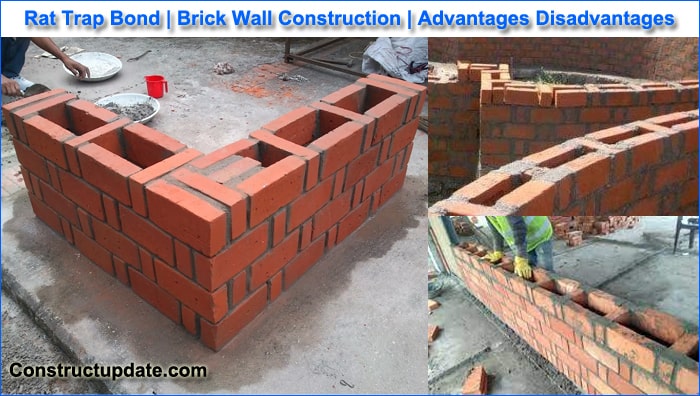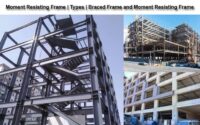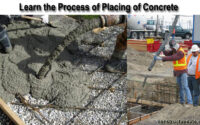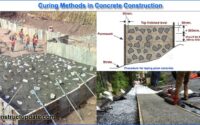What is Rat Trap Bond Method | Materials, Construction Benefits | Rat Trap Bond Masonry
A rat trap bond is a sort of modular masonry bond in which the bricks are arranged vertically to create a cavity in the wall while preserving the same wall thickness as a typical brick masonry wall. Another name for it is a Chinese brick bond.
Due to the cavity that is created in the wall, this type of masonry bond serves the aim of requiring less bricks and mortar than the English/Flemish bond.
It was first utilised extensively in Kerala by architect Laurie Baker in the 1970s because it was less expensive to build, required fewer materials, and was more energy-efficient than a traditional brick wall without sacrificing wall strength.
In this post, we go through the rat trap bond masonry’s material requirements, construction, benefits, and drawbacks.

Rat Trap Bond Wall Construction Materials
The following materials were used to build the rat trap bond:
1. Bricks
The size of the bricks used must be standard size, and there cannot be a size variance. Bricks should be between 220 and 250 mm in length, 100 to 115 mm in width, and 65 to 75 mm in height in Indian construction scenarios.
Bricks must have flat, acute edges and corners that are precisely rectangular in shape.
Since masonry is of the modular kind, it is essential to have bricks of the same size in order to provide the necessary strength and quality.
As long as the quality of the bricks is maintained, the compressive ratio should be the same.
2. Mortar
Sand and cement should be added to the mortar in an adequate amount because they are key ingredients in the bonding of the bricks.
3. Trowel
- The trowel needs to be of a standard design for bonding rat traps.
- It can be used to spread mortar and apply it.
4. Measuring Tape
- The measuring tape should be metallic, standard, and have lengths of 5 and 30 metres.
- You can use it to measure the appropriate dimension.
5. Lining Thread
A straight wall is made sure by using the lining thread.
6. Wooden Template
For the purpose of preventing mortar from entering the cavity, a wooden template is utilised.
Brick Wall Construction Using Rats Trap Bond Masonry
The bricks are arranged vertically so that the 110 mm face, rather than the 75 mm face, is visible from the front elevation (considering brick of standard size 230 X 110 X 75 mm). A cavity inside the wall is created because the wall’s width is still 230mm. About 30% less material (brick and mortar) is saved here, which lowers the entire cost of building. Effective thermal and acoustic insulation is provided by cavities. As a result, rat trap bond is an economical and energy-efficient building technique.
Pointers
- The bricks must be of high quality, with uniform dimensions and straight edges.
- The wall’s bottom and upper layers should both be made of solid material (without cavity).
- For the purpose of fixing frames, the layer at the sill and lintel levels of the aperture and on its sides should be solid (without a hollow).
- To increase earthquake resistance, reinforcement bars can be placed in vertical cavities at corners and around apertures.
- Lintels can be made by inserting reinforcement bars horizontally, which will increase their resistance to earthquakes.
- Plumbing pipes and electrical conduits can be placed into cavities for better aesthetics with advanced planning.
Advantages of Rat Trap Bond Method
Here are some advantages of rat trap bonding techniques.
This approach is adaptive because it uses less building materials, which lowers the overall cost of the materials.
This approach uses about 30% fewer bricks and 50% less mortar than traditional construction.
Due to their ignorance of this strategy, most people avoid employing it. However, the strength is comparable to an outdated technique for laying bricks.
Given that thermal insulations are this method’s primary advantage, it is advantageous to lower room temperature and lower power expenses.
This kind of bricklaying is essential for withstanding heat and cold in both types of weather.
Both inside and outside of the wall, the construction’s bricklaying pattern is striking; the plastering procedure is avoidable, while it is not
The fact that a load may be placed on a brick wall constructed using this technique for laying bricks indicates that the bricks’ load-bearing capacity remains unaffected.
This method is highly helpful for lowering material costs since it lowers material consumption, which lowers the cost of building.
The disadvantage of Rat Trap Bond
Here are some drawbacks of rat trap bonding techniques.
Without experienced workers, mortar waste could happen during construction.
Good sound insulation cannot be achieved because of the cavity.
In order to maintain plaster’s visual appeal if plastering is not done, appropriate and regular cleaning becomes important.
The rat-trap bond construction must be done with extra caution and under close supervision.




